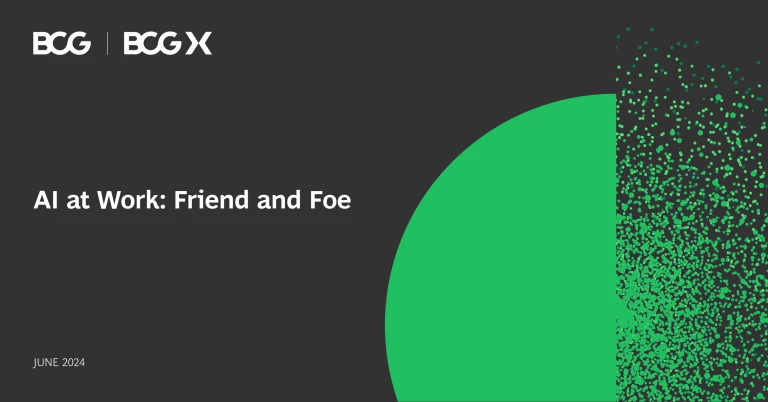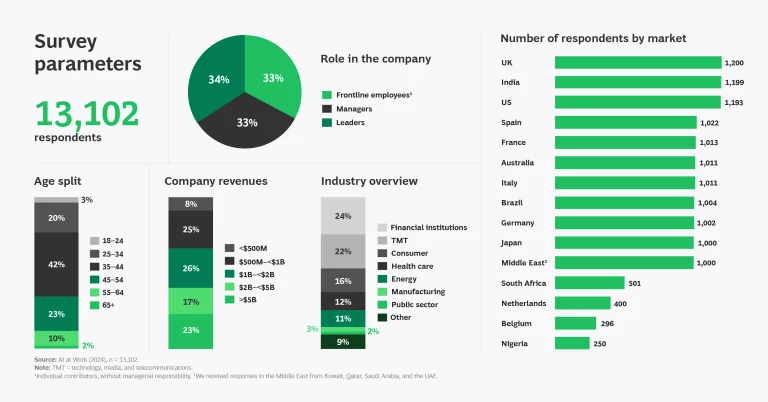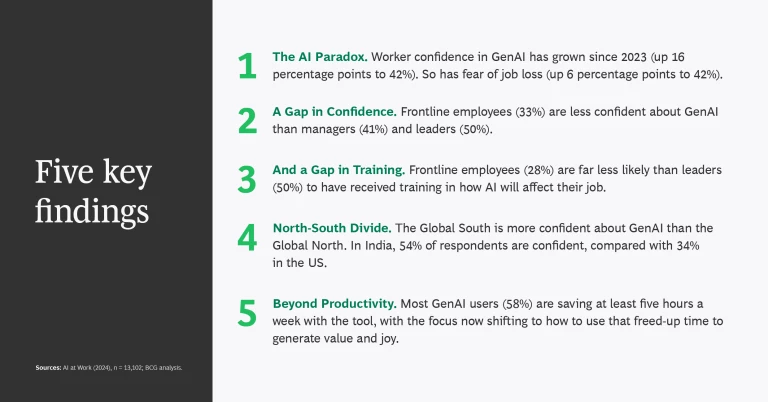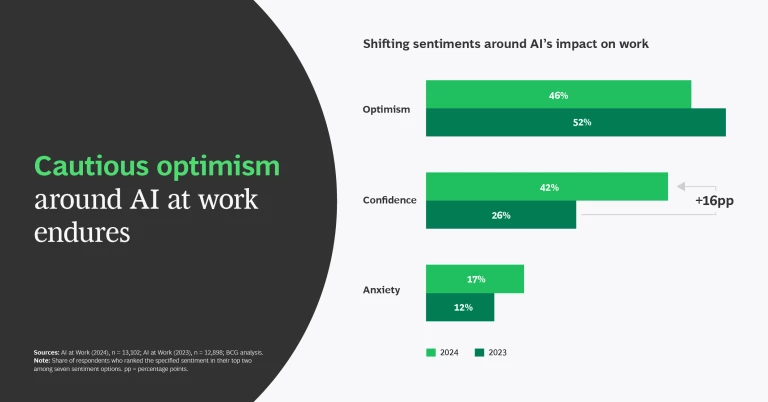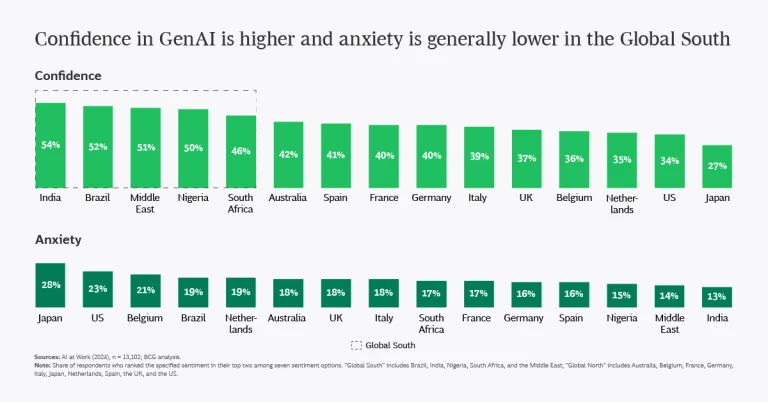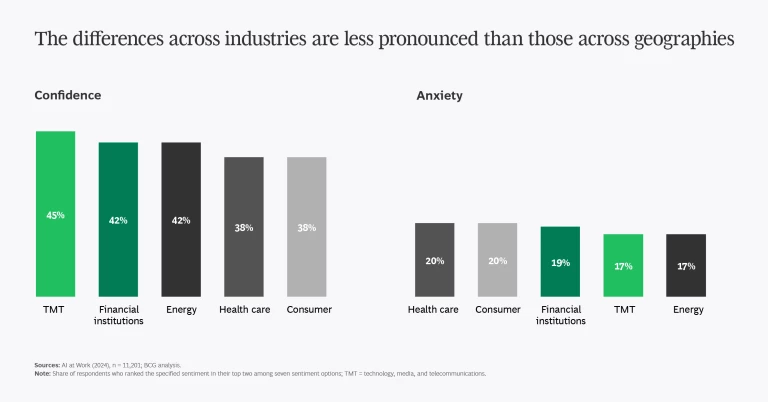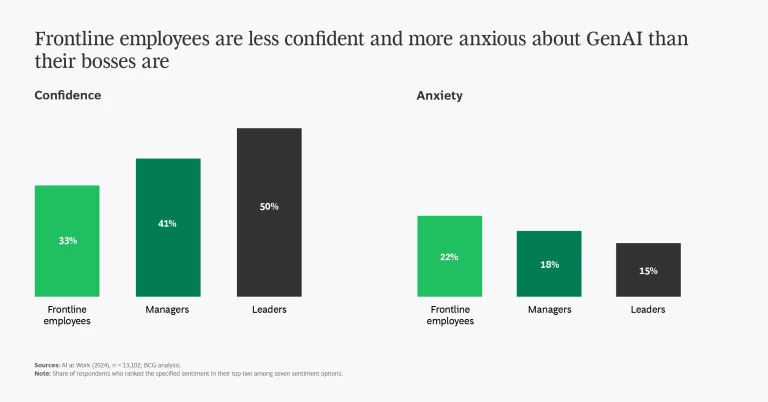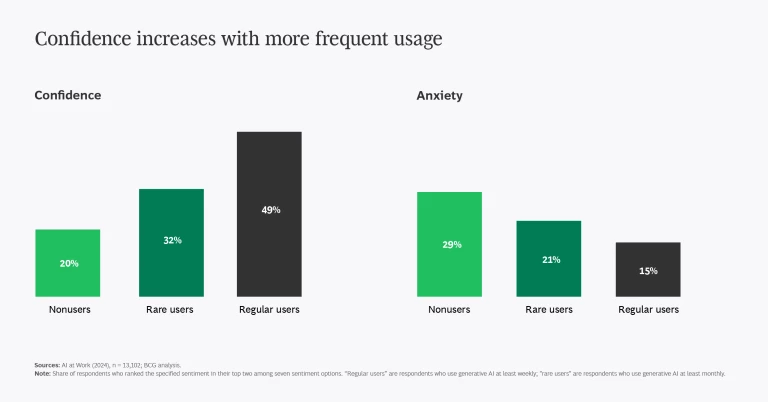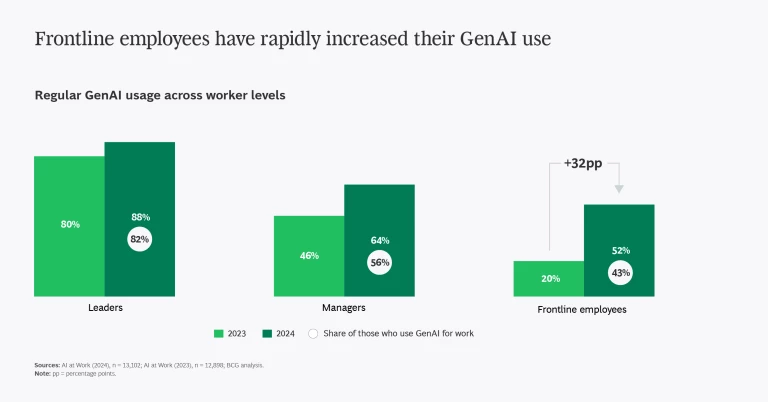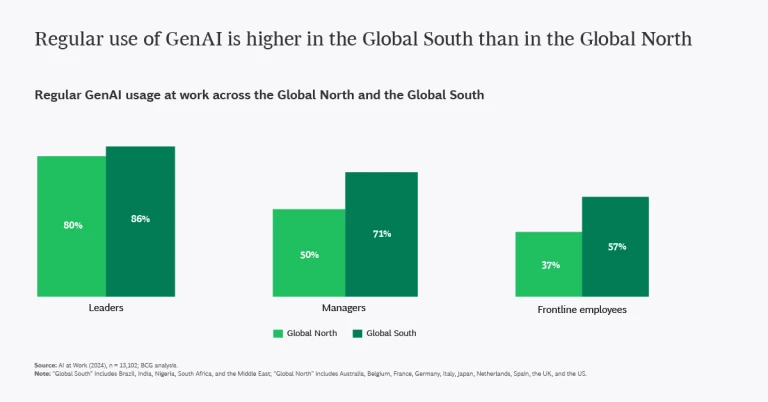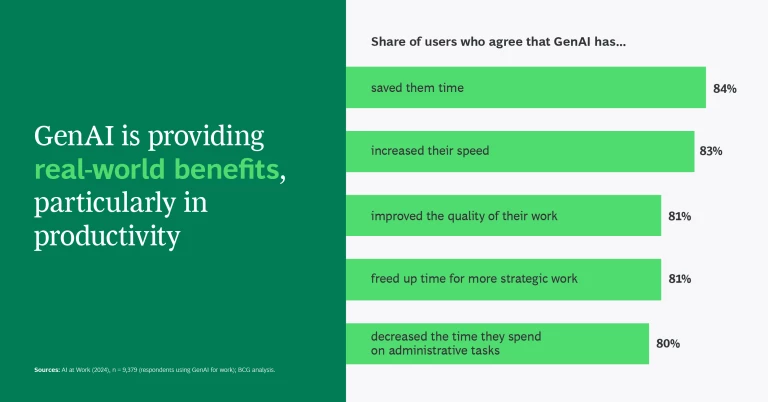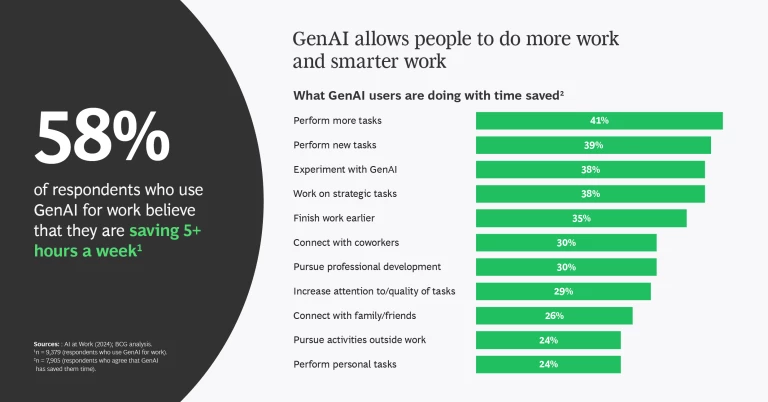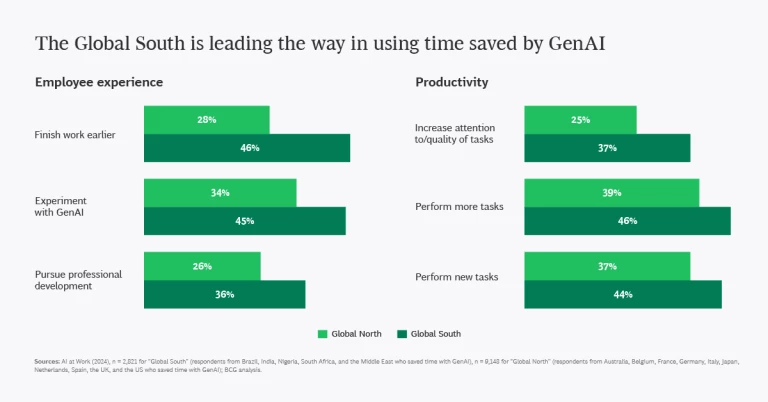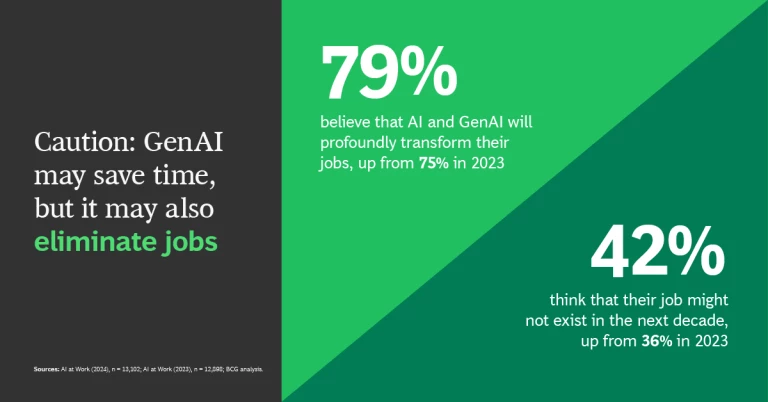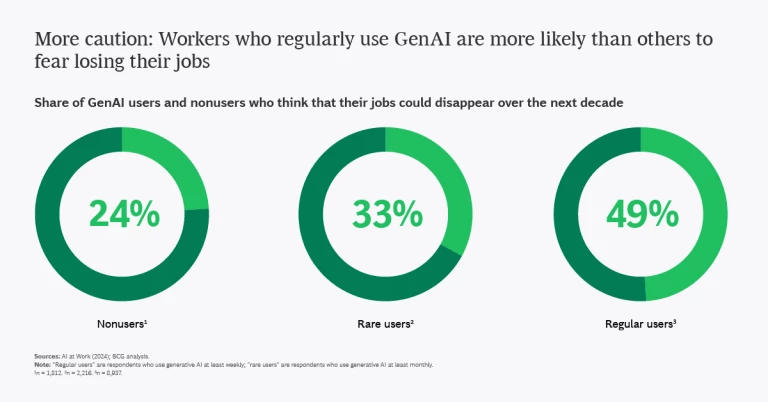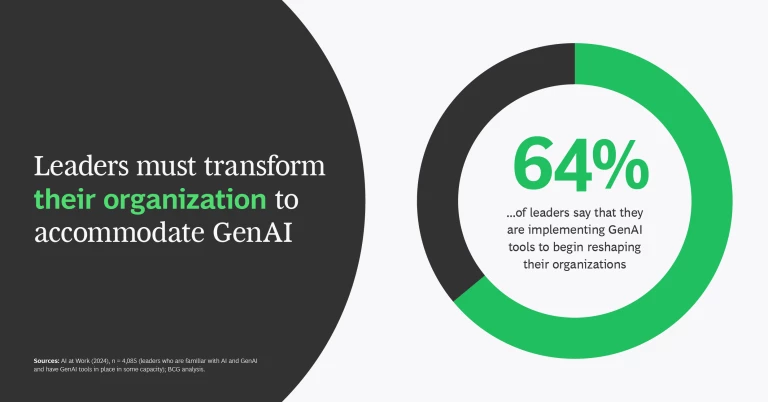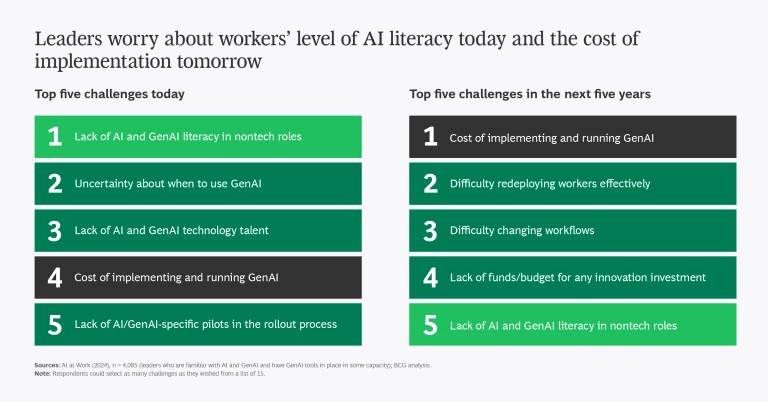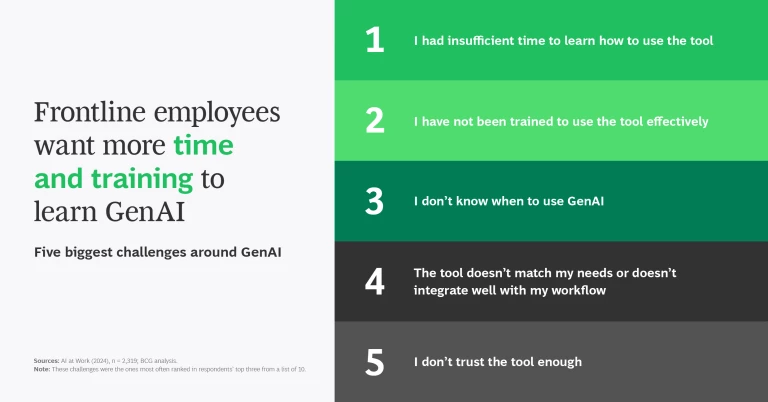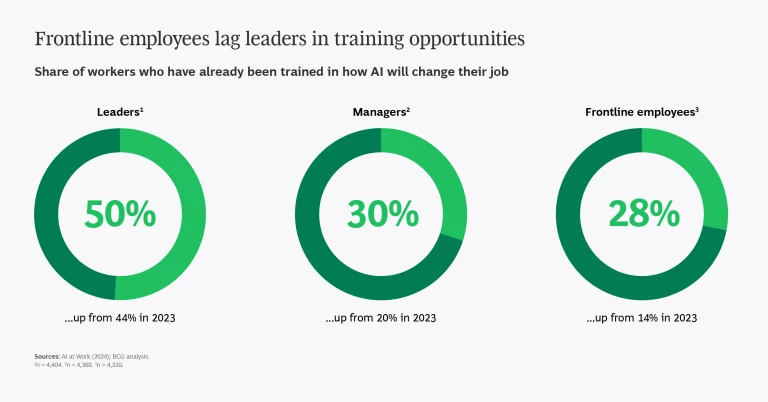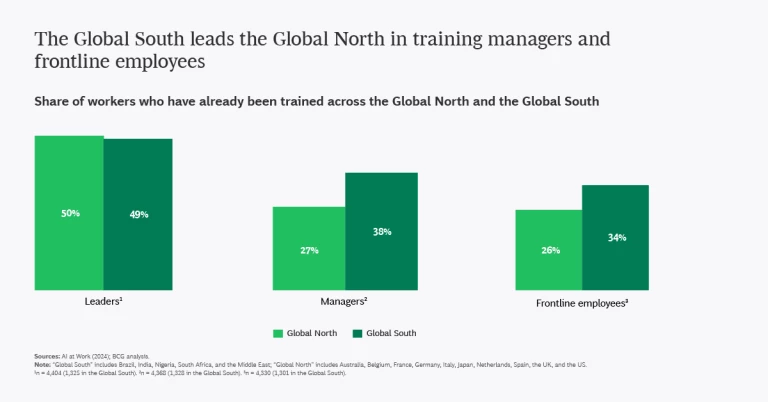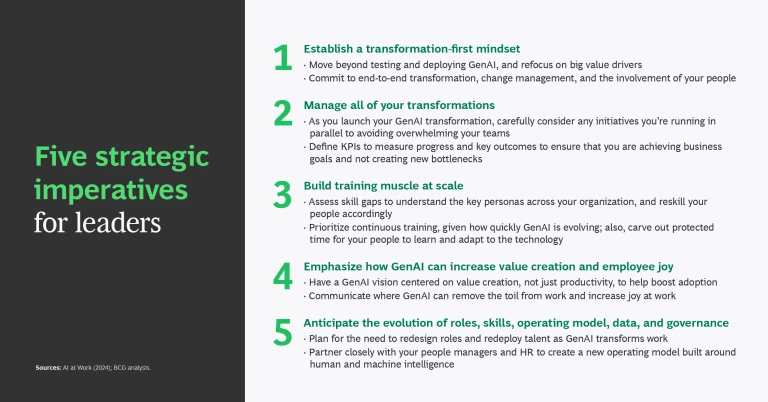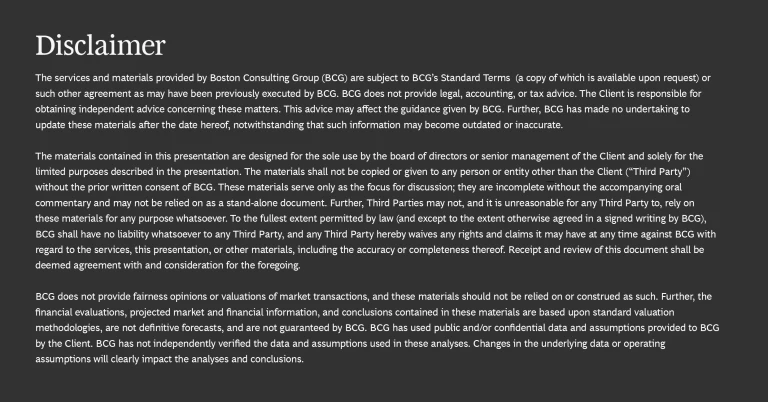The rapid adoption of classic AI and GenAI in businesses is creating a split-screen effect:
- On one side, employees are reporting increasing confidence in these tools over the past year as they use the tools more frequently. About half of employees are saving at least five hours a week by using GenAI at work.
- On the other, employees who regularly use GenAI tools are more likely than others to worry about job loss. Overall, 49% of regular users believe that their job may disappear in the next ten years, compared with only 24% of employees who do not use GenAI.
These dueling and paradoxical views emerge from a global survey conducted by BCG X of 13,102 employees—from executive suite leaders to frontline employees—in 15 countries and regions. Most of the respondents work in office-based roles. The accompanying slideshow provides a more detailed picture of the survey results.
Reshaping the Organization
We conducted the survey at a critical phase in the maturation of GenAI, as companies move beyond pilots and start to integrate the technology into the fabric of their organizations. Nearly two-thirds of leaders, 64%, said that they are starting to use GenAI to reshape their organizations.
As companies transform their businesses to accommodate GenAI, they will need to manage this workplace tension between confidence and concern. One approach is to emphasize GenAI’s ability to reduce the drudgery of work, such as administrative tasks, while increasing the time available for tasks that employees enjoy, such as professional development and, for managers, mentoring and coaching.
How GenAI Saves Time
The productivity-enhancing benefits of GenAI are well known. But what do employees do with the five hours a week that the tool saves?
Respondents report devoting the additional time to such useful activities as performing more tasks (41%) or new tasks (39%), experimenting with GenAI (38%), and working on strategic tasks (38%). GenAI is allowing these employees to work smarter. It is not just removing toil from their work.
Training Can Unlock GenAI’s Potential
Leaders and frontline employees recognize the need for training to fully activate GenAI. It is central to the top three challenges that leaders identify today:
- Lack of AI and GenAI literacy in nontech roles
- Uncertainty about when to use GenAI
- Lack of AI and GenAI technology talent
Likewise, the top three challenges of frontline workers in using GenAI relate to training:
- Insufficient time to learn how to use the tool
- Ineffective training
- Users’ uncertainty about when to use GenAI
Although companies have made strides in training their employees since last year, when we conducted a similar survey, we found this year that only 30% of managers and 28% of frontline employees have been trained in how AI will change their jobs, compared with half of leaders.
The Global South Leads the Way
Respondents from Brazil, India, Nigeria, South Africa, and Middle East countries (these respondents were grouped together) were more consistently bullish than respondents in mature markets about GenAI. They expressed greater confidence in GenAI and lower anxiety about the technology. The Global South had a higher proportion of regular users of GenAI at work among its leaders, managers, and frontline employees than the Global North did.
In the time freed up by using GenAI, Global South respondents were more likely to experiment with the tool, engage in professional development, and focus on the quality of their work. Finally, managers and frontline employees from the Global South were more likely than their peers in the Global North to have received GenAI training.
Their positive views likely reflect the overall youth and optimism of their populations and the gathering strength of their economies.
Unleashing the Transformative Power of GenAI
The survey exposes the double-edged nature of GenAI. Familiarity correlates with both comfort and fear. GenAI is a revolutionary technology, so these opposing reactions should not be surprising.
But these human reactions do pose a challenge to organizations as they embark on a transformation built around GenAI. Fortunately, the rules of transformation are not revolutionary, and most companies have experience in transformation. The accompanying slideshow provides a more detailed view of the survey results and a set of five key recommendations:
- Establish a transformation-first mindset.
- Manage all your transformations.
- Build training muscle at scale.
- Emphasize how GenAI can increase value creation and employee joy.
- Anticipate the evolution of roles, skills, operating model, data, and governance.
As we wrote last year, “these are more management challenges than technology challenges.” By recognizing the complex ways in which humans understand and interact with GenAI, leaders can reshape their organizations to maximize the strengths and value of their human and machine workers.

